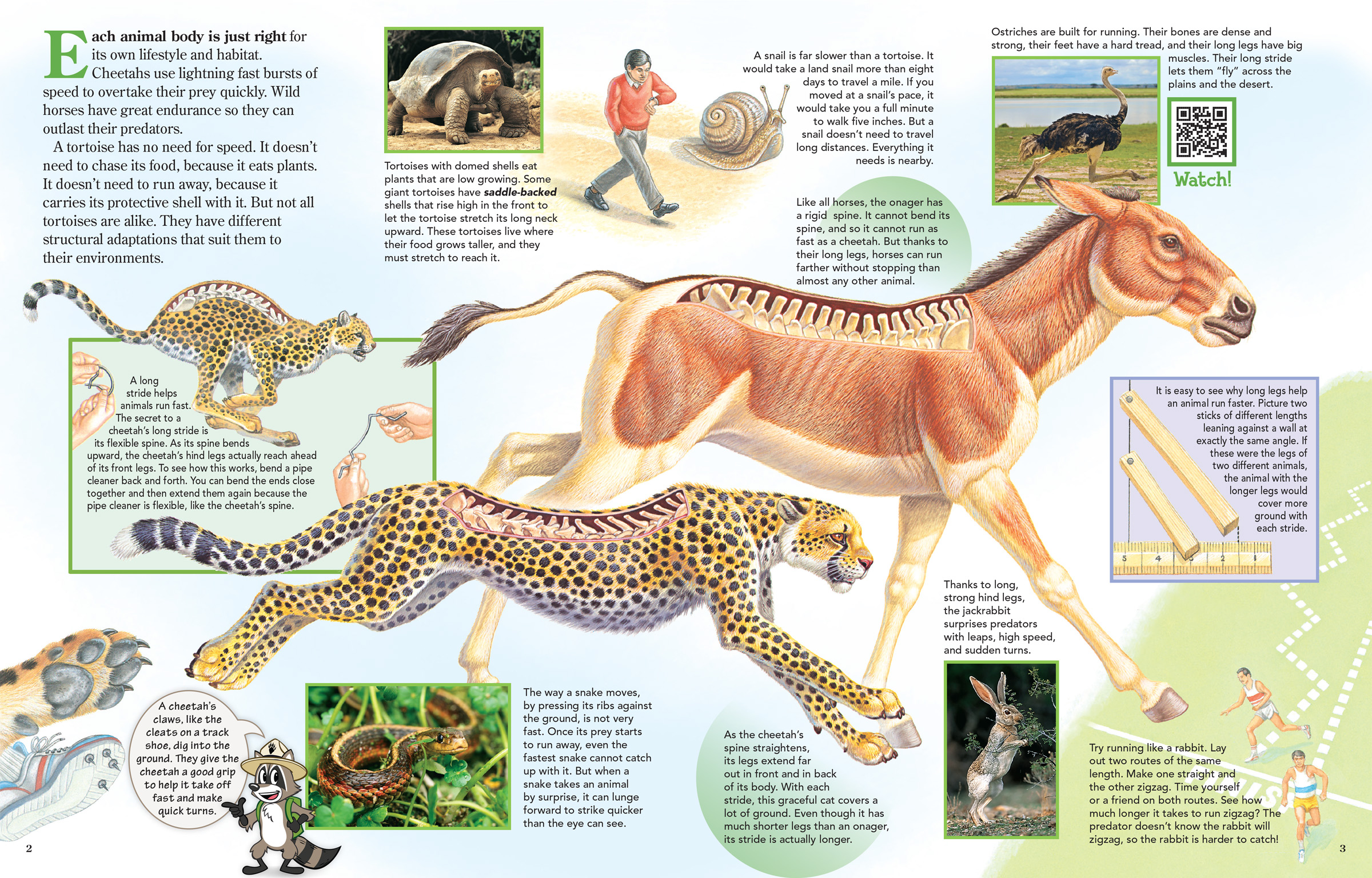
Each Animal Body is Just Right
ByEach animal body is just right for its own lifestyle and habitat. Cheetahs use lightning fast bursts of speed to overtake their prey quickly. Wild horses have great endurance so they can outlast their predators.
A tortoise has no need for speed. It doesn’t need to chase its food, because it eats plants. It doesn’t need to run away, because it carries its protective shell with it. But not all tortoises are alike. Different shell shapes help them survive in different environments.
Tortoises with domed shells eat plants that are low growing. Some giant tortoises have saddle-backed shells that rise high in the front to let the tortoise stretch its long neck upward. These tortoises live where their food grows taller, and they must stretch to reach it.
A long stride helps animals run fast. The secret to a cheetah’s long stride is its flexible spine. As its spine bends upward, the cheetah’s hind legs actually reach ahead of its front legs. To see how this works, bend a pipe cleaner back and forth. You can bend the ends close together and then extend them again because the pipe cleaner is flexible, like the cheetah’s spine.
A cheetah’s claws, like the cleats on a track shoe, dig into the ground. They give the cheetah a good grip to help it take off fast and make quick turns.

The way a snake moves, by pressing its ribs against the ground, is not very fast. Once its prey starts to run away, even the fastest snake cannot catch up with it. But when a snake takes an animal by surprise, it can lunge forward to strike quicker than the eye can see.
A snail is far slower than a tortoise. It would take a land snail more than eight days to travel a mile. If you moved at a snail’s pace, it would take you a full minute to walk five inches. But a snail doesn’t need to travel long distances. Everything it needs is nearby.
Ostriches are built for running. Their bones are dense and strong, their feet have a hard tread, and their long legs have big muscles. Their long stride lets them “fly” across the plains and the desert.
Like all horses, the onager has a rigid spine. It cannot bend its spine, and so it cannot run as fast as a cheetah. But thanks to their long legs, horses can run farther without stopping than almost any other animal.
It is easy to see why long legs help an animal run faster. Picture two sticks of different lengths leaning against a wall at exactly the same angle. If these were the legs of two different animals, the animal with the longer legs would cover more ground with each stride.
Thanks to long, strong hind legs, the jackrabbit surprises predators with leaps, high speed, and sudden turns.
As the cheetah’s spine straightens, its legs extend far out in front and in back of its body. With each stride, this graceful cat covers a lot of ground. Even though it has much shorter legs than an onager, its stride is actually longer.
Try running like a rabbit. Lay out two routes of the same length. Make one straight and the other zigzag. Time yourself or a friend on both routes. See how much longer it takes to run zigzag? The predator doesn’t know the rabbit will zigzag, so the rabbit is harder to catch.

